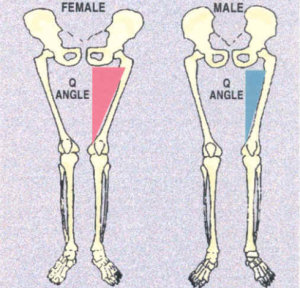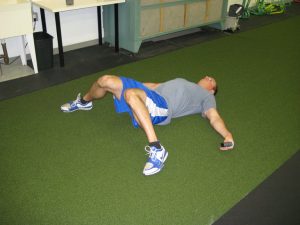Training Males and Females: Similar, but Different
Males and Females: Similar, but Different
During my weekly Pubmed scan, I came across this study the other day:
The Core and Hip in Soccer Athletes Compared by Gender
It seemed like a good fit for this week’s newsletter for a few reasons.
First, we always hear that men and women should train exactly the same. While there are certainly a lot of similarities between how I personally approach the training of men and women, as I noted in a previous newsletter, there are also a lot of important considerations specific to females. This study highlights on such consideration: increased hip internal rotation as compared with their male counterparts.
Ask anyone who has ever trained male soccer or hockey players or powerlifters, and if they know anything about assessment, they’ll tell you that a hip internal rotation deficit (HIRD) is a huge problem. It can lead to knee, hip, or lower back pain and have a markedly negative impact on movement. Improving length of the hip external rotators – with flexibility drills like the knee-to-knee stretch – is of paramount importance.
Well, those exact same drills would actually increase the typical female’s injury risk. Excessive hip internal rotation and knee valgus are just a few of the many reasons (also including the hip abductor and core control weaknesses outlined in this study) that most females have more anterior cruciate ligament injuries than males.

The lesson could end there – but it won’t. Why?
I had a female distance runner in for an evaluation on Saturday, and she had very poor hip internal rotation. A flexibility drill that would be inappropriate for the female “masses” is a great fit for her. Cases like this make it very clear that it’s important to assess and not just assume.
This is why I’m so excited about the impending release of our new product, which outlines a series of self-assessments and corrective exercises one can use to pinpoint these issues and address them in a targeted fashion. Keep an eye out for an announcement on its release in the weeks to come.
Feedback on Maximum Strength
“This program took me to the next level of performance with my lifting. After using a variety of programs focusing on fat-loss and hypertrophy and having limited results from them it was great to see such solid increases in strength and physique changes from the program. In addition, the program focus on dynamic flexibility and foam rolling has resulted in an injury free training cycle and major flexibility and posture improvements. I would highly recommend this program and book to anyone wanting to make real progress with strength, performance and body composition.”
Dan Hibbert – Calgary, Alberta
Increased body weight by 14 pounds, broad jump by seven inches, box squat by 80 pounds, bench press by 30 pounds, deadlift by 70 pounds, and 3-rep max chin-up by 27.5 pounds.
Check out Maximum Strength for yourself!
New Blog Content
Shoulder Range-of-Motion Norms
Have a great week!
EC




